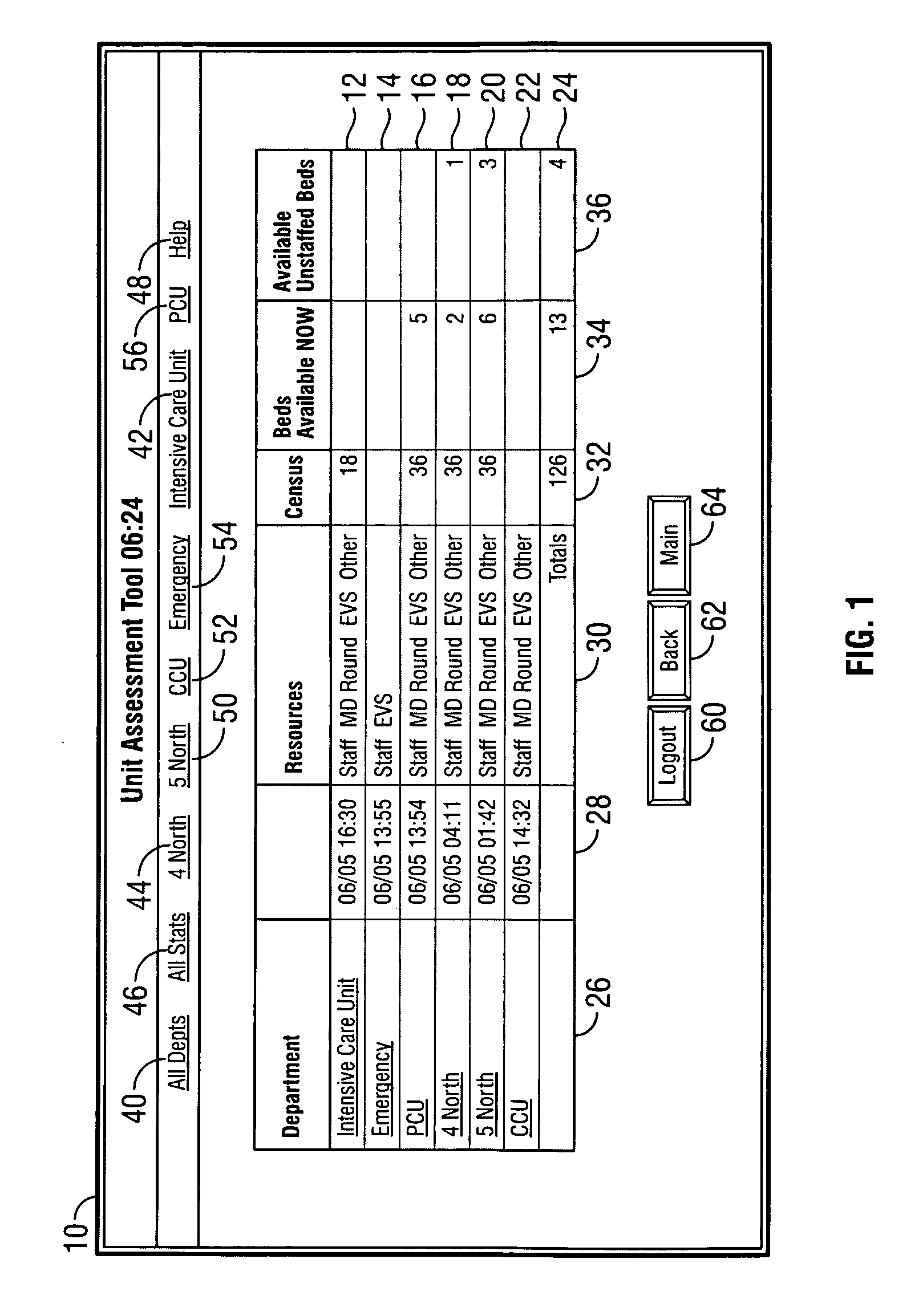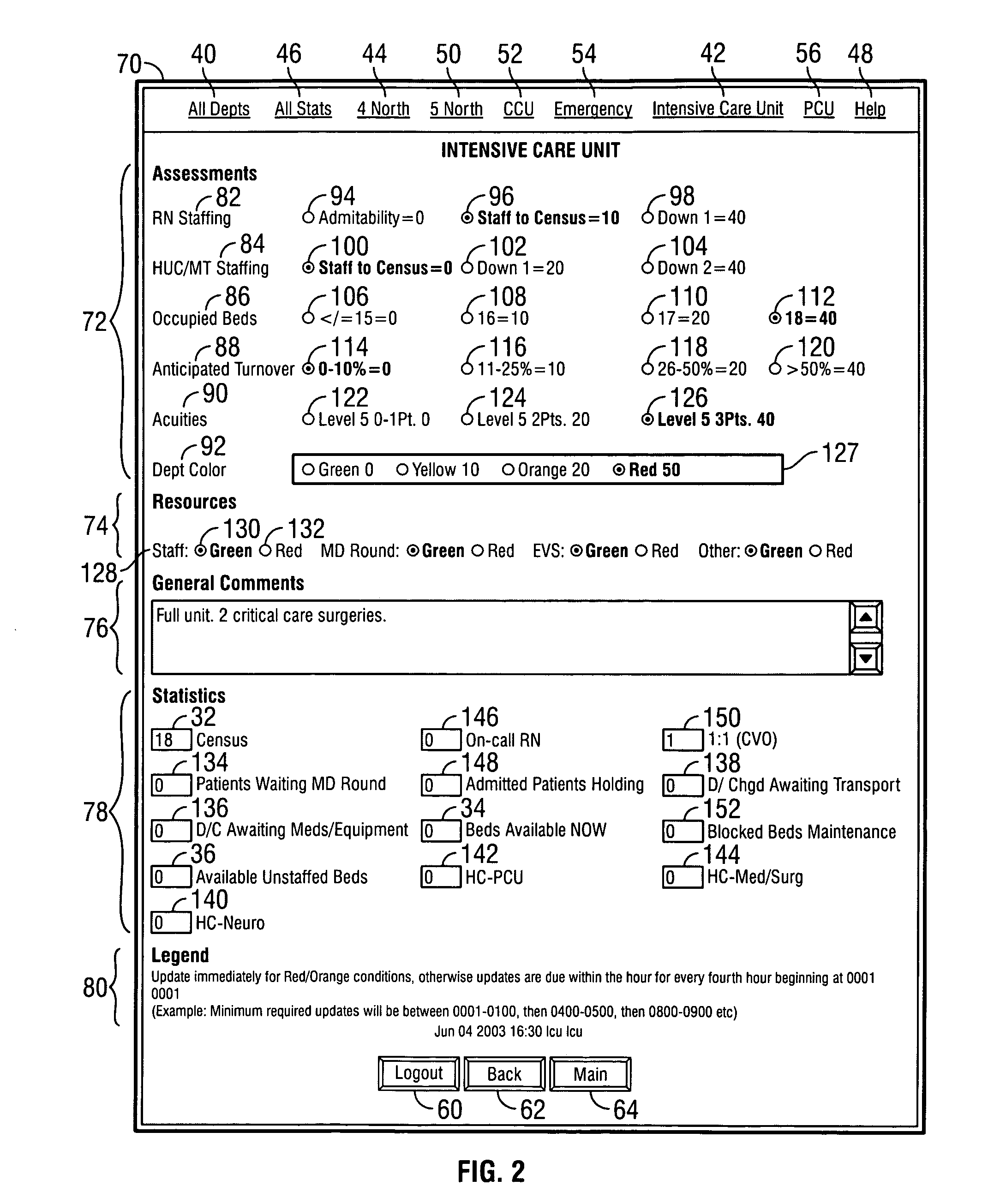Health unit assessment tool
a health unit and assessment technology, applied in the field of business management methods and apparatuses, can solve the problems of recurring problems in maintaining appropriate staffing levels and bed capacity of hospitals and other health care facilities, skilled health care workers are often faced with similar problems, and achieve the effect of fewer resources
- Summary
- Abstract
- Description
- Claims
- Application Information
AI Technical Summary
Benefits of technology
Problems solved by technology
Method used
Image
Examples
Embodiment Construction
[0038] While the invention will be described in connection with one or more embodiments, it will be understood that the invention is not limited to those embodiments. On the contrary, the invention includes all alternatives, modifications, and equivalents as may be included within the spirit and scope of the appended claims.
[0039]FIG. 1 is a view of the top screen 10 of a unit assessment tool according to the present invention, showing the status of all covered departments of a hospital on one screen of a conventional computer. In this embodiment, the screen 10 includes a data row 12 showing the status of the Intensive Care Unit (ICU), a data row 14 showing the status of the Emergency Care Unit (ECU), a data row 16 showing the status of the Post-Critical Care Unit (PCU), a data row 18 showing the status of a first medical / surgical care unit located on the north end of the fourth floor of the hospital, a data row 20 showing the status of a second medical / surgical care unit located o...
PUM
 Login to View More
Login to View More Abstract
Description
Claims
Application Information
 Login to View More
Login to View More - R&D
- Intellectual Property
- Life Sciences
- Materials
- Tech Scout
- Unparalleled Data Quality
- Higher Quality Content
- 60% Fewer Hallucinations
Browse by: Latest US Patents, China's latest patents, Technical Efficacy Thesaurus, Application Domain, Technology Topic, Popular Technical Reports.
© 2025 PatSnap. All rights reserved.Legal|Privacy policy|Modern Slavery Act Transparency Statement|Sitemap|About US| Contact US: help@patsnap.com



